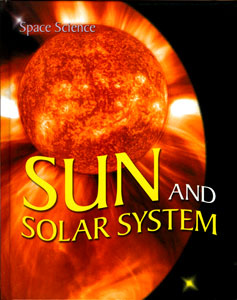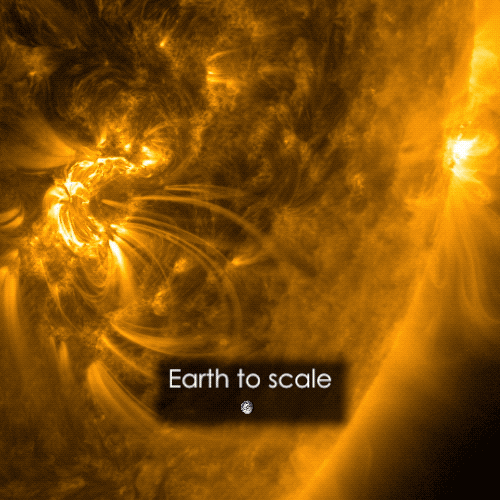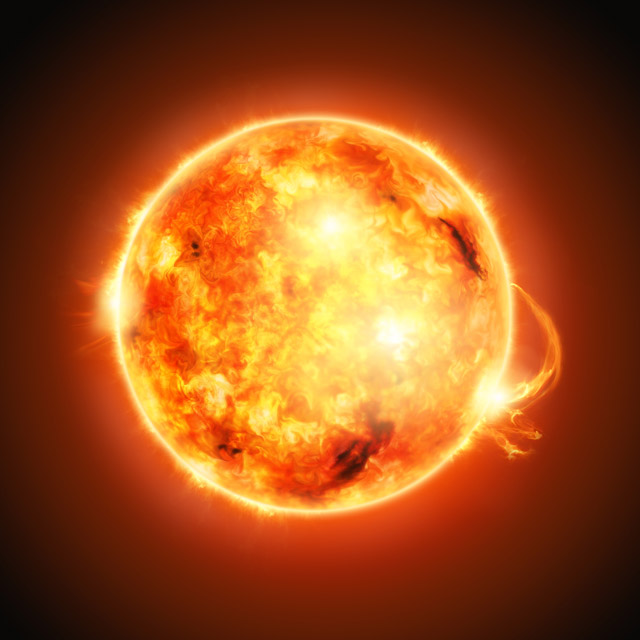Explore these further resources...
(These links take you to other parts of our web site, never to outside locations.)
You can search in these books:






The Sun is a star 1.4 million kilometres across whose gases constantly churn over and send huge streams of matter far out into the Universe. We receive just one two millionth of all the energy emitted by the Sun, and yet plants can still capture enough of it to provide the energy for all life on Earth, nearly 150 million kilometres away.
The Sun is so large that it has immense gravitational pull, and can hold all nine of the planets of the Solar System in orbit.
The Sun formed about five billion years ago and will continue to exist for another five billion years.
The Sun is made mostly of hydrogen and helium. At the centre of the Sun the high pressure on the hydrogen gas changes it into helium gas. As this happens, huge amounts of energy are released. Two of these forms of energy are light and heat. But other forms of energy such as ultra-violet light and x-rays are also released.
The core of the Sun is 15 million degrees centigrade. It takes the energy generated at the core one million years to reach the Sun's surface.
The surface of the Sun is 5,800 degrees centigrade. There are cooler parts of the Sun which are also darker and are known as sunspots. Sometimes huge jets of gas explode out of a sunspot. These are called solar flares. Columns of gas rise from other parts of the surface and may last for days or weeks. These are known as prominences.



